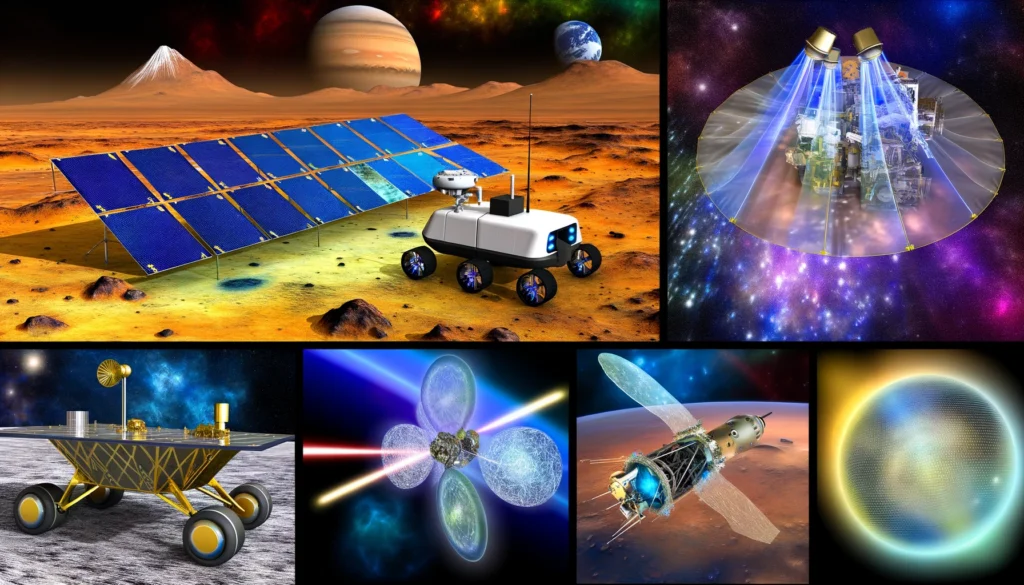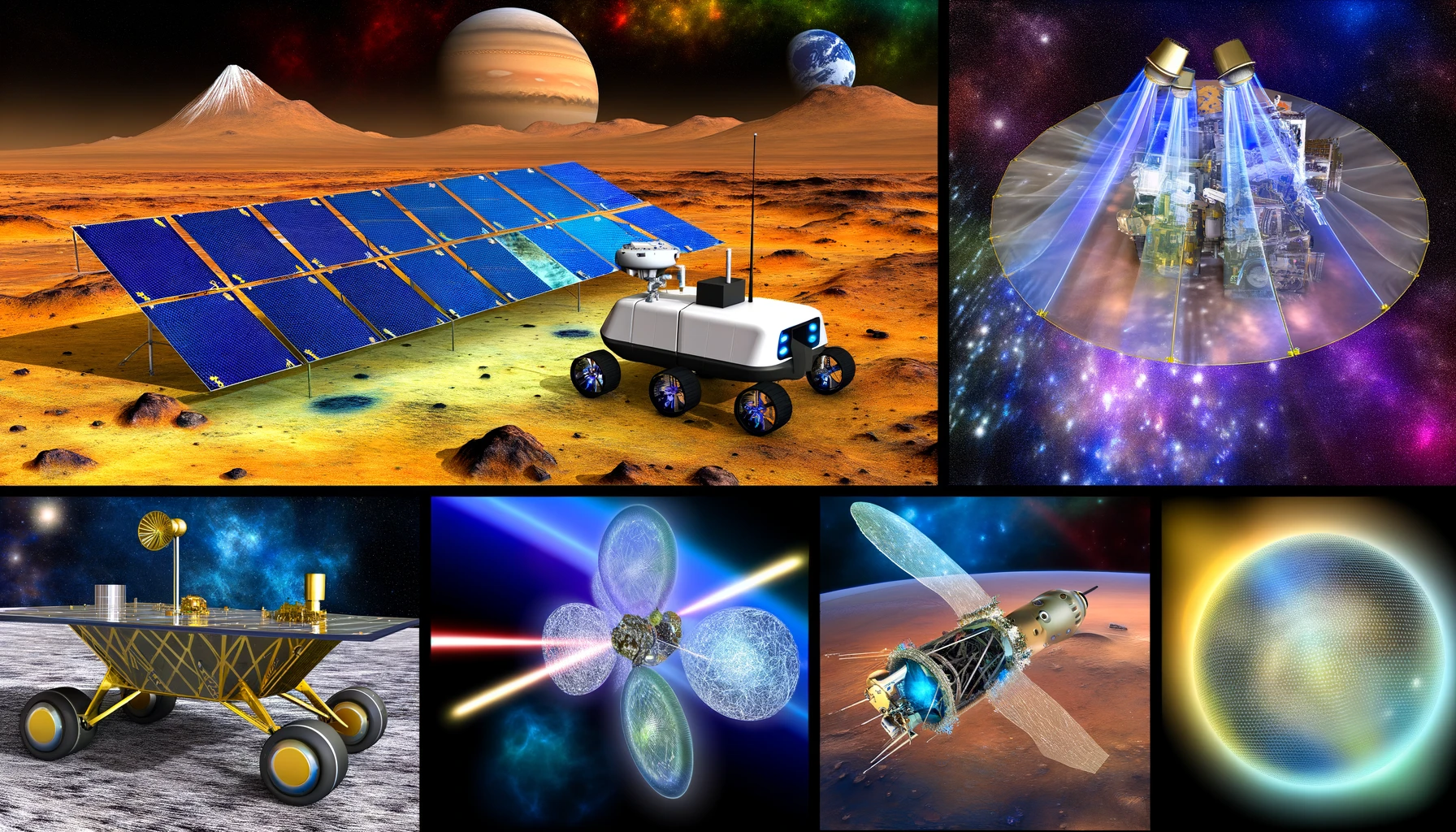“NASA, space technology, future space missions, innovative technology, space exploration, deep space observation, autonomous rovers, solar sail, laser communications, spacecraft shielding, sustainable space travel”
“Explore NASA’s latest breakthroughs as it advances six revolutionary technology concepts to a new phase. From autonomous rovers to solar sails and nano-material spacecraft shielding, discover how these innovations could transform future space missions and pave the way for new explorations beyond our solar system.”

Introduction
NASA, known for its pioneering endeavors in space exploration, has recently advanced six cutting-edge technological concepts to a new phase in its developmental pipeline. This progression underscores NASA’s commitment to fostering innovative solutions that could revolutionize future space missions. This article delves into these six technologies, exploring their potential impact on space exploration and the broader implications for science and technology.
Innovative Concepts Taking Flight
- Bio-Inspired Ray for Ocean Exploration (BIO-ROE) One of the most intriguing projects involves the Bio-Inspired Ray for Ocean Exploration (BIO-ROE). This technology draws inspiration from marine life, specifically manta rays, to design a highly maneuverable, energy-efficient underwater vehicle. BIO-ROE aims to explore the alien oceans, such as those on Jupiter’s moon Europa, making it a critical tool for future missions searching for life beyond Earth.
- Autonomous Lightweight Rover for Off-world Navigation (ALRON) The Autonomous Lightweight Rover for Off-world Navigation (ALRON) is designed to navigate the harsh terrains of planets like Mars and the Moon. Equipped with advanced autonomous navigation systems, ALRON can traverse over rocks and through dust with minimal human oversight. This rover represents a significant step forward in our ability to conduct remote geological surveys and in-situ resource utilization.
- High-Resolution Space Telescope with Inflatable Components (HRST-IC) Expanding the boundaries of deep space observation, the High-Resolution Space Telescope with Inflatable Components (HRST-IC) introduces an innovative approach to space telescope design. By utilizing inflatable technology, HRST-IC aims to deploy a larger telescope structure once in orbit, allowing for unprecedented resolution and clarity in observing distant galaxies and exoplanets.
- Solar Sail with Photovoltaic Surfaces (SSPV) The Solar Sail with Photovoltaic Surfaces (SSPV) combines solar sail propulsion with photovoltaic energy generation. This dual-functionality allows the SSPV to harness the sun’s energy for both power and propulsion, offering a sustainable and efficient method for long-duration space missions. This technology could significantly reduce reliance on traditional chemical rockets, paving the way for cleaner, more sustainable exploration strategies.
- Laser-Based Communications Relay (LCR) Addressing the need for faster and more reliable space communication, the Laser-Based Communications Relay (LCR) aims to replace traditional radio frequency communications with laser technology. LCR promises to increase data transmission rates by orders of magnitude, facilitating real-time communication across vast distances, and enhancing the capabilities of both crewed and uncrewed missions.
- Nano-material-based Spacecraft Shielding (NSS) The Nano-material-based Spacecraft Shielding (NSS) involves the development of advanced materials designed to protect spacecraft from cosmic radiation and micrometeoroid impacts. Utilizing nano-technology, NSS aims to create lighter, more effective shielding, thus reducing the overall mass and cost of spacecraft while enhancing safety for long-duration missions.
Implications for Future Space Exploration
The advancement of these six technologies not only signifies NASA’s ongoing commitment to innovation but also has broad implications for future space exploration. These technologies could lead to more sustainable exploration methods, enhance our understanding of distant celestial bodies, and potentially pave the way for human colonization of other planets.
Moreover, the technological breakthroughs achieved through these projects could find applications on Earth, particularly in fields such as renewable energy, telecommunications, and materials science. The dual-use potential of these technologies underscores their value beyond the immediate scope of space exploration.
Conclusion
NASA’s latest initiative to advance six innovative technology concepts marks a significant milestone in space exploration. As these projects move into a new phase of development, they promise to not only enhance our capabilities in space but also offer substantial benefits for technological advancement on Earth. The future of space exploration looks brighter than ever, driven by relentless innovation and a quest to push the boundaries of what is possible.
